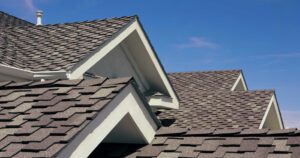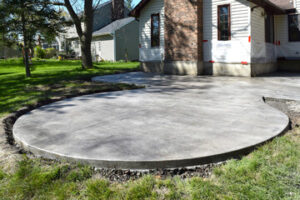Roofers are responsible for constructing and installing roofs. They also repair and maintain existing roofs. In addition, they may install insulation and vapor barriers. They must be knowledgeable about building codes and construction methods.
Roofers must also be skilled at working at heights and using ladders. They should follow all safety guidelines when working at high elevations.
Roofers, also known as roof mechanics and roofing contractors, build, repair, replace, and maintain the roofs of buildings. They use hand tools and other equipment to construct and repair roofs and install insulation systems and vapor barriers. They also inspect the structure of existing roofs and provide estimates to clients. These contractors may specialize in residential or commercial roofing or both. Roofers must have the ability to work at heights and use ladders, scaffolding, and other equipment. They must also be able to climb, bend, and kneel in extreme weather conditions. Roofers must be able to work well with others and follow safety standards.
Full-service roofers are large companies that offer roof cleaning, replacement, and repair services to both homeowners and businesses. They typically have multiple crews and offer a variety of roof types, materials, and warranties. They can also handle insurance claims and work with a wide range of budgets. They often specialize in particular types of roofing, such as shingle or tile roofs.
Retail sales roofers are smaller companies that sell and install shingles and other roofing materials. These roofers usually focus on commercial and residential roofs, and they may have a small customer service department. They are also a great choice for storm damage, as they have the resources to help their customers navigate the insurance process. They can also offer in-house financing, such as zero-percent financing, which may be beneficial for customers who do not have the funds to pay upfront.
Small roofing companies are small businesses that may only have one crew. They are not as available to answer phone calls, and they may not be able to accommodate your schedule. If the owner of a small roofing company is on a roof or on a phone call, it can be difficult to get in touch with them. In these situations, you can try to find another roofing contractor that has more availability. If you can’t, consider hiring a roofer who offers other services, such as painting and siding installation, to help with your renovation project. This way, you can get the job done and avoid wasting your money.
Retail sales roofers
If you’re a roofer and want to increase your sales, you may want to consider offering financing or pre-qualifying customers. This is a great way to help homeowners make their roofing investments fit within their budget. In addition, it shows that you care about your customers’ needs and are willing to go above and beyond for them. Many people avoid contacting roofers because they are afraid of the cost, but it’s important to remind them that a new roof is an investment that can pay for itself in the long run. A good way to do this is by offering free inspections, quotes, or consultations. This will give homeowners confidence in your company and help them make an informed decision.
Large retail sales roofers often have a customer service department and can schedule your project quickly. They also have access to a wide variety of materials, so they can find something that fits your needs. However, they will probably require a long sales presentation with all decision makers present. These presentations can be two to four hours long and are designed to make you feel like you’re getting a lot of value.
Storm chasers are another type of roofer that focuses on insurance work. They follow major storms, going door to door and checking for damage. They offer services such as roof repair and replacement, insurance claim assistance, and zero-interest financing. They also offer a limited warranty on their products.
To improve your sales, you can use roofing apps and videos to show homeowners the benefits of each option. These tools can make the process more efficient, and you’ll be able to get your roofing projects done faster. It’s also important to understand what your competitors are doing. By conducting a competition analysis, you’ll be able to create a unique sales strategy that will set you apart from the rest.
Selling roofs requires a high level of knowledge and communication skills. A well-informed representative can answer questions quickly and clearly, which builds trust with potential clients. They can also explain the advantages of higher-quality roofing materials and how they protect homes. This will encourage potential buyers to choose your company over a competitor.
Large roofing companies
A large roofing company is a business that specializes in commercial and residential roof installation, maintenance, repair and replacement. It may also offer other services, such as chimney service, gutter cleaning, window replacement and siding work. In addition to these services, some companies may offer financing for their projects. They are more likely to use high-quality materials than small businesses. They are usually able to offer more competitive pricing because they can purchase materials in bulk and have access to a larger number of employees.
Before hiring a roofer, be sure to check their credentials and business registration information. Some states require roofing contractors to have a contractor’s license and proof of insurance. Others have licensing requirements for the type of roof they install. Also, a contractor should be registered with the local business permit office to avoid fines or other issues. A roofing business can be run as a sole proprietorship, partnership, corporation or limited liability company (LLC). Consult with a lawyer to determine which entity is best for you.
If you’re looking for a roofer, make sure to get a written estimate that specifies the scope of work, whether old shingles will be removed, what types and brands of materials will be used, and any other important details. Ensure that the contract includes a warranty on the materials and labor. If you’re unsure about a roofer, ask for references and pictures of previous projects.
Choosing the right roofer can be tricky, especially when you’re not familiar with the area. You’ll want to choose a roofer who is licensed and insured, has excellent customer service, and has a good reputation. You can also check out their websites to see what other customers have to say about them.
The construction industry is highly cyclical, so you need to be prepared for ups and downs. For example, if the weather is poor, you’ll see an increase in roofing jobs. On the other hand, if the weather is beautiful, there’ll be less demand for roofing services. It’s also a good idea to keep track of your profits and losses. This way, you can plan accordingly.
Small roofing companies
When you choose a small roofing company, you’re supporting local jobs and encouraging entrepreneurship. These firms may also have a better understanding of your specific community’s needs and challenges, which helps them provide superior customer service. In addition to being able to offer more competitive pricing, they’re usually more flexible when it comes to working with homeowners and insurance companies. They can even take on projects that would be rejected by a larger firm.
When choosing a roofer, make sure that they have a business license and liability insurance. If they don’t, they’re putting you and your home at risk. Moreover, some states require roofing contractors to carry workers’ compensation coverage. In order to get the best deal on your roofing project, you should shop around and compare quotes from different small companies.
A good small roofing company should have an in-house finance department to manage payments and invoices. They should also have a project management system that keeps track of client information and work orders. Using this software will help them save time and money, while ensuring that every job is completed to your specifications. It will also allow them to monitor their performance and ensure that they’re not juggling too many projects at once.
Retail sales roofers tend to give longer, more involved presentations that can last from two to four hours. This is to convince customers that they’re getting a great value for their money. You should be prepared to negotiate for the materials you want and the pricing you’re comfortable with.
In addition to negotiating the price of materials, you should also find out whether or not they’ll be doing any additional work on your roof. If so, you should ask them to give you a detailed quote and a timeline for completion. This will help you avoid hidden costs and prevent misunderstandings.
Small roofing companies can also be more responsive to problems during the course of a project, and they’ll have a better understanding of your community’s unique climate conditions. As a result, they’ll be able to address minor issues before they become bigger headaches. They can also help you file a claim with your insurance company if necessary.









